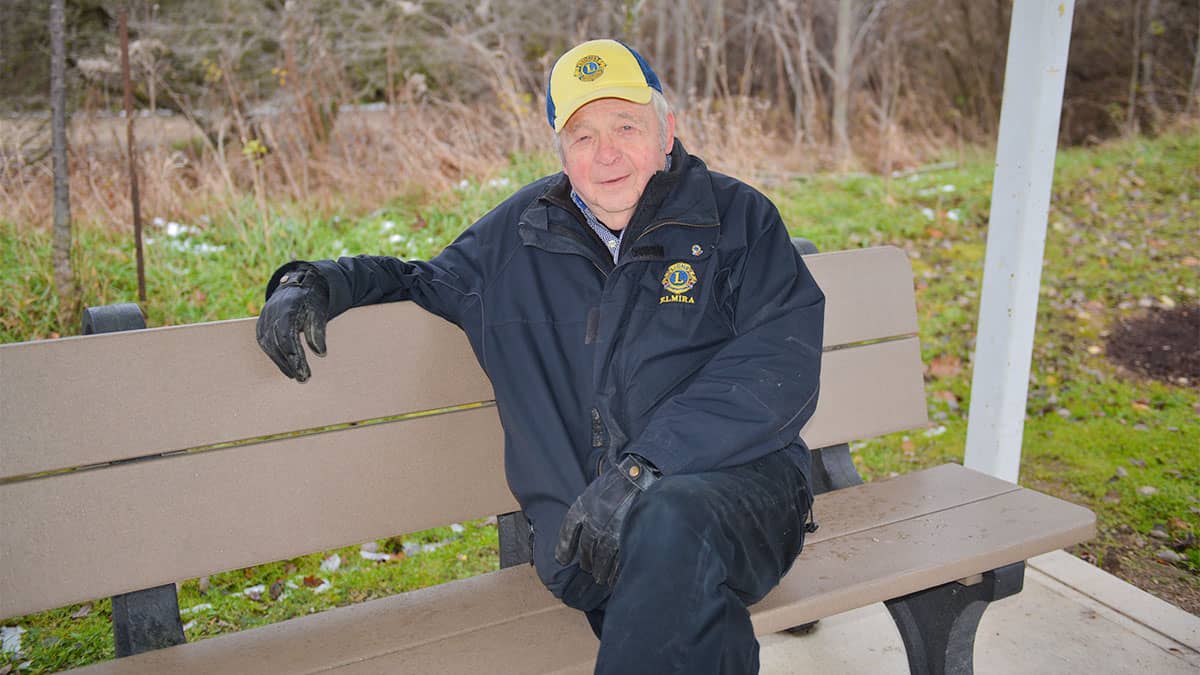Woolwich will spend $400,000 to shore up the low-level bridge in St. Jacobs that’s been closed since September due to safety concerns.
A large rainfall event on September 22 caused rapid erosion on some of the piers supporting the bridge, which is designed to be flooded over during high-water episodes. Erosion concerns had first been identified during underwater inspections in 2018, but the September downpour caused visible sagging and cracking.
Now, engineering staff is proposing emergency repairs to the existing piers and replacement of a portion of the deck, director of infrastructure services Jared Puppe told township councillors meeting in a special session Tuesday night.
In response to a question from Coun. Patrick Merlihan, Puppe said the situation warranted quick action to prevent further damage to the bridge that might render it irreparable.
“The emergency aspect is that it is failing, and it has failed. If we do nothing right now, we will lose the bridge – that is the emergency piece,” he explained.
Another underwater inspection last month revealed that additional undermining of the piers had occurred across all eight of the piers, most notably in the four most easterly piers. A large, full-width, crack was also identified adjacent to the second most easterly pier. The visual tilting of the bridge deck to the south coincides with the undermining of the four most easterly piers, Puppe noted in his report.
“Once erosion starts, it happens very quickly. So I think that’s what we’re trying to prevent, further erosion. We’re going to fill the void and stop any further erosion,” he said, adding that will buy time for council to make a decision about the long-term fate of the bridge.
Woolwich had already planned to start an environmental assessment process this year in order to determine if the bridge should be rehabilitated or replaced, with construction pencilled in for 2025.
If the $400,000 spent now to buttress the supports is successful, long-term repairs could be carried out for another $600,000 to $700,000, said Puppe. Replacing the bridge would cost $3-$4 million.
The emergency repairs, which could see the bridge reopen by year’s end or early in 2022, would hold up for at least another five years while a long-term plan was developed, he added.
Coun. Larry Shantz argued for quick action to reopen the conduit for users of horse-drawn buggies.
“We have to open this up as soon as possible because this is really causing issues for the horse-and-buggy traffic. I think that’s something that we have to attend to,” he said.
“We have fielded a number of calls from the Old Order community. I think the detriment is to that community. It is not the vehicular traffic that we’re concerned about, though it is quite a cut-through. It’s more than Mennonite community, the horse-and-buggy community, and how they access St. Jacobs back and forth – that’s the concerning piece,” said Puppe.
The emergency expense is unbudgeted, with Puppe suggesting the $400,000 be drawn from federal gas tax funding that had already been allocated for 2022 projects. That, in turn, would require council to scale back next year’s budget or borrow more money to keep planned work on the schedule.
“Are there projects in jeopardy in specific, or are you priming us for more debentures in 2022?” asked Merlihan in relation to the reallocated gas tax money.
Puppe noted there are currently three 2022 capital projects slated to use borrowed money: the Peel Street pedestrian bridge in Winterbourne, municipal drain #1 in Breslau and a portion of the Industrial Drive project in Elmira. Any changes would be part of the upcoming budget process.
“Debenture doesn’t sit well with me, but sometimes it has to be done,” said Shantz, calling for the Peel Street bridge project to be pushed off for a year or so to make way for the higher-priority repairs to the St. Jacobs structure.
In the meantime, Puppe noted, the township will be carrying out more monitoring of the low-level bridge, particularly after weather events.










